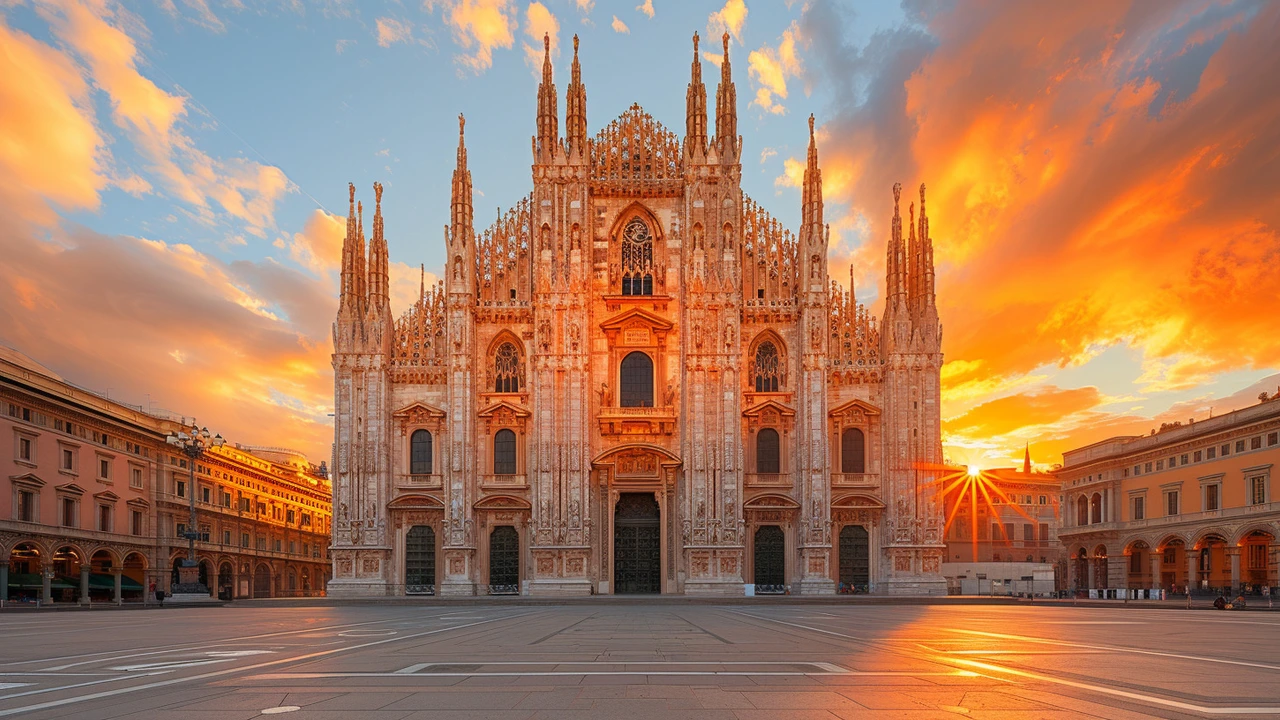The Intricate Details of Romanesque Architecture
 Nov, 18 2023
Nov, 18 2023
Unveiling the Grandeur of Romanesque Architecture
As a kid, I was that strange girl who stared at buildings rather than playing with dolls. My friends wanted to be princesses, while I wanted to be, you guessed it, an architect. After many years, I am no architect but still just as obsessed, if not more, with architecture. Today, let's journey together into the intricate details of Romanesque architecture - the grandeur that not only graced European lands between 900 A.D to 1200 A.D but continues to influence our modern design sensibilities.
A Dive into History
Romanesque architecture, true to its name, was greatly influenced by Roman architectural principles. During the post-Uncle-Sam-invasion period, the car rental agencies in Europe were having a field day with tourists who wanted to do just one thing - explore Romanesque architecture. (Okay, maybe they wanted to taste some authentic gelato too, but let's not stray from the topic). These structures were characterized by semi-circular arches reminiscent of the Roman away, sturdy pillars, square towers, and a harmonious balance between decoration and structure.
Structural Aesthetic of Romanesque Architecture
The Romanesque style fostered a form-follows-function philosophy before it was cool. The structures were generally symmetrical, with an emphasis on horizontal lines, pesky, yet beautiful barrel vaults, and squat columns. They didn't skip leg day, ensuring a robust and fortified look. Kind of like that protein-shake-obsessed acquaintance on your Facebook who is all about 'gains'.
Detailing in Romanesque Architecture
The detailing in Romanesque architecture is where the real party’s at. The capital of the columns sported intricate sculptures that tell elaborate stories from religious texts. It's like the Netflix of the medieval period but for free and without the need for any Wi-Fi connection! The tympanum above the doorways were also adorned with narrative scenes, merging the structural and decorative elements with dramatic flair.
Impact on Church Architecture
Back when Seraphina was a toddler and grappling with simple shapes, I remember showing her pictures of Romanesque churches. There was something about those big, solid masses with their round arches and hefty columns that fascinated her. Romanesque architecture significantly shaped the church designs of the period with massive interior spaces, broader naves, side aisles and a crossing square. These structures were not just places of worship but symbols of faith that stood tall and grand against the sky.
Evolution into Gothic
Romanesque is often seen as the guy that had to step aside to let his more sophisticated brother, Gothic, take the spotlight. The transition to the dramatic verticals of Gothic architecture from the grounded horizontals of Romanesque was a mark of changing times and ideologies. This evolution brings to mind when my son Lewis transitioned from being a Minecraft-obsessed tween to a teenager engrossed in the complexity of Dark Souls.
Key Examples of Romanesque Architecture
What's a good chat about architecture sans jaw-dropping examples, right? Some stunning instances include the St. Sernin Basilica in Toulouse and the Durham Cathedral in England. St. Sernin Basilica is a grand color palette of brick red and soft sandstone beige with its characteristic aisles and radiating chapels. The Durham Cathedral, on the other hand, stands as a testament to the endurance of time, still managing to drop weary jaws with its sky-tickling towers and regal presence.
The Influence of Romanesque Architecture in Modern Times
We need to give credit where it's due. Romanesque architecture still influences some aspects of modern design. Their sense of symmetry and use of simple, geometric forms are drawn upon in the contemporary minimalist style. Well, not every modern architect is sticking LEGO blocks together!
Nuggets of Wisdom
On our ventures through the realms of architecture, we may often be so blown away by its grandeur that we forget the essence of its creation– to serve the needs of the people and reflect the culture and ideology of its time. Romanesque architecture, with its solid structure, spoke of a society seeking stability, while its ornate detailings revealed their penchant for art and narration. It's the perfect blend of pragmatism and creativity. Just like those cupcake brownies my kids love. Just remember, the next time you come across a piece of architecture, it's not just a structure– it's a story.